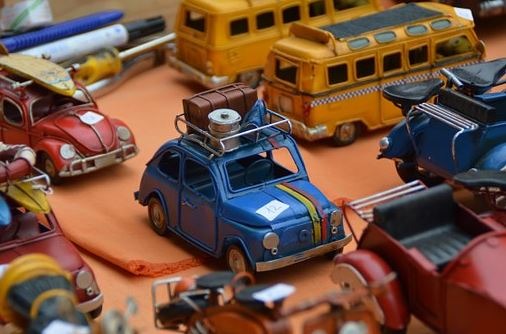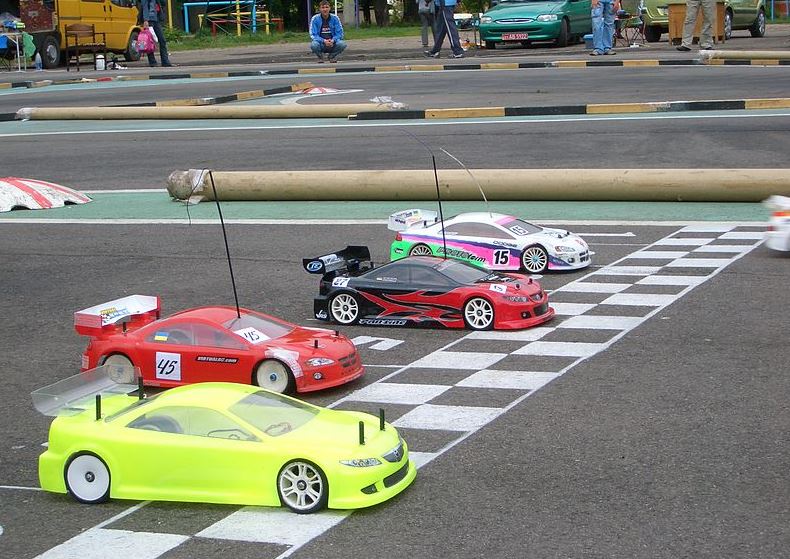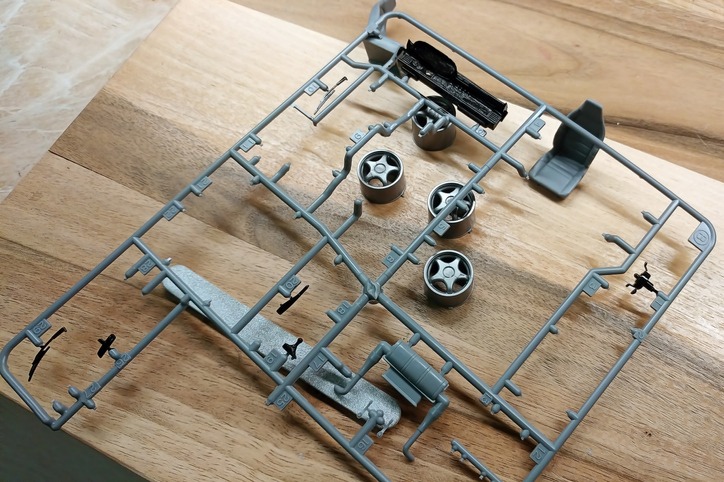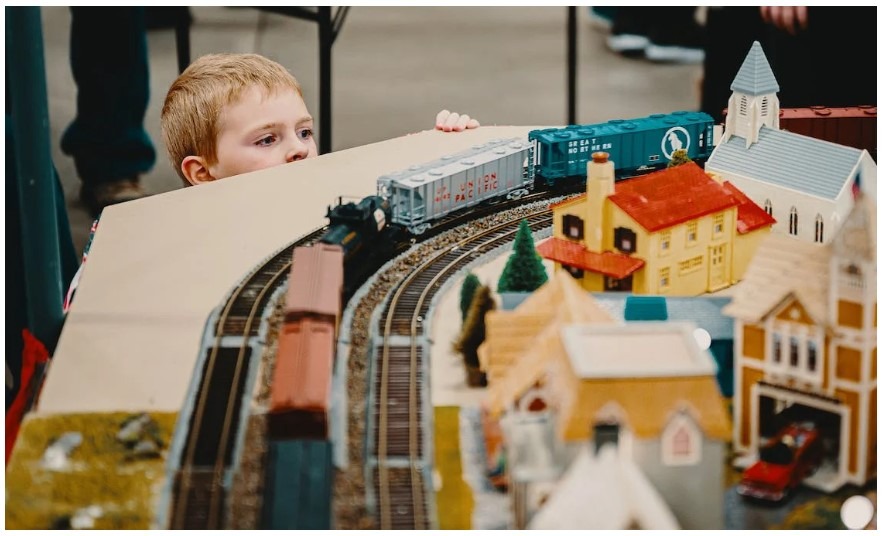How Young Is Too Young for Beginning a Love of Model Cars?

You're never too young to start cultivating a love for model cars. The expedition begins in toddlerhood with simple, durable toy vehicles and evolves as your child grows. For toddlers, focus on large, safe toys that support motor skills and language development. As they reach preschool age, introduce more realistic vehicle models. Elementary school years are perfect for simple construction kits, while tweens and teens can tackle more complex builds. Remember to prioritize safety, match complexity to skill level, and emphasize fun throughout. By encouraging this interest early, you'll pave the way for a potentially lifelong hobby that combines creativity, problem-solving, and engineering skills.
Age-Appropriate Vehicle Play
While many parents wonder when to introduce their children to model cars, the truth is that vehicle-based play can begin as early as toddlerhood. At just two years old, your child can safely experience large, durable toy vehicles, developing sensory awareness and hand-eye coordination.
As they grow, their interaction with vehicles evolves. Pre-schoolers aged 3-5 can investigate simple, realistic vehicle models, cultivating imaginative play and early STEM concepts. This hands-on experience helps young children understand their world through their senses.
Elementary school-aged kids, 6-8 years old, are ready for more complex vehicle construction kits. These projects nurture problem-solving skills and fine motor development. As your child reaches the tween and teen years (9-13), they can immerse themselves in detailed scale model building. This hobby hones attention to detail and perseverance.
Throughout these stages, vehicle-based play engages children in spatial reasoning and creative thinking.
Safety Considerations for Toddlers
For toddlers, safety is paramount when introducing model cars. While Playing with toy vehicles often seems harmless, young children under 3 are at risk of choking on small parts or ingesting harmful substances. Toy cars and trucks designed for older children may contain tiny pieces that can be easily swallowed or inhaled by curious little ones.
When considering model cars for toddlers, keep these safety considerations in mind:
- Avoid kits with small parts that pose choking hazards
- Be cautious of painted surfaces that may contain lead or other toxic substances
- Guarantee adult supervision at all times during play
- Choose age-appropriate toy vehicles that support language and fine motor development
Making toy vehicles objects of fascination for toddlers is possible, but it's essential to prioritize safety. Opt for larger, simpler toy cars and trucks specifically designed for young children. These toys often promote imagination and cognitive growth without compromising safety. As your child grows older and develops better dexterity, you can gradually introduce more complex model cars under close supervision. Remember, cultivating a love for model cars should never come at the expense of your child's well-being.
Developmental Benefits of Toy Cars
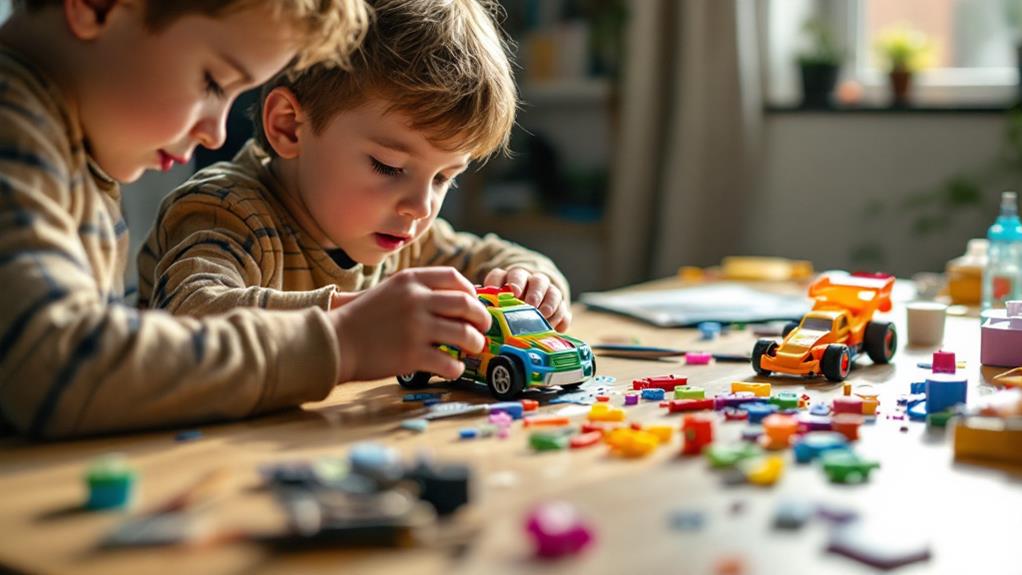
Toy cars often serve as more than just playthings for young children. These miniature vehicles offer a wealth of developmental benefits that can greatly impact your child's growth. As Kids adore to play with and tinker with toy cars, they're unknowingly enhancing sensory skills and cognitive abilities.
Playing with toy vehicles stimulates fine motor skills, improving hand-eye coordination and dexterity. This exciting sensory experience contributes to overall neurological development, especially in infants and toddlers. The act of manipulating toy cars helps children grasp fundamental concepts of spatial awareness and logical thinking.
Toy vehicles offer opportunities for imaginative play, nurturing language development through descriptive storytelling. As your child explores the mechanics of these toys, they're laying the groundwork for future STEM learning. Early exposure can cultivate an interest in science, technology, engineering, and mathematics.
For children who love toys with flashing lights and sounds, toy cars provide auditory and visual processing stimulation. This multisensory engagement supports cognitive development and problem-solving abilities. By incorporating toy cars into playtime, you're providing your child with a fun and educational experience that contributes to their overall growth and development.
Transitioning to Model Building
As your child's interest in toy cars grows, the natural progression often leads to model building. This shift can happen as early as preschool age, offering a new sensory experience that's exhilarating for kids.
Model building builds upon the fascination with toy vehicles, helping them explore the world of engineering and design in greater detail.
The benefits for growing minds are numerous when moving from toy vehicles to model building:
- Enhances fine motor skills and hand-eye coordination
- Develops problem-solving abilities and spatial awareness
- Nurtures patience and attention to detail
- Encourages creativity and imagination
You'll find that scale model kits designed for young children often feature larger pieces and simplified construction, making the transition from toys with flashing lights to more complex projects smoother. This progression allows kids to learn persistence and organizational skills as they work towards completing their models.
Choosing the Right Model Kits
Selecting the right model kit is essential for nurturing your child's budding interest in model cars. Just as toy vehicles provide a foundation for imaginative play, age-appropriate model kits can fuel a child's love of toy vehicles while developing important skills.
For young minds, simple snap-together kits are ideal, as they stimulate their senses without overwhelming them. These basic models, whether it's a sleek car or a roaring truck, allow children to create their own play scenarios while building fine motor skills.
As your child grows, you'll want to introduce more complex kits. For 8-12 year-olds, choose models that offer engaging challenges without causing frustration. These kits help develop problem-solving abilities and enhance attention to detail.
For teens and older enthusiasts, detailed kits with intricate components and painting requirements provide advanced skill development opportunities. By offering a range of difficulties, you'll support your child's building abilities as they age. Remember, the key is to match the kit's complexity with your child's skill level, supporting a lasting love for model cars while avoiding discouragement.
Nurturing a Lifelong Hobby
The expedition of nurturing a lifelong hobby in model car building begins with a child's first snap-together kit. As you introduce your little one to the world of miniature vehicles, you're not just handing them a toy; you're opening the door to a passion that can last well into adulthood.
Whether it's a fire truck or a race car, each model feeds their appetite for creativity and encourages a sense of accomplishment.
To nurture this hobby and help it grow with your child:
- Start simple and gradually increase complexity
- Encourage patience and attention to detail
- Celebrate each completed model
- investigate different types of cars and their histories together
The most important thing is to make the experience enjoyable. As you build models together, you'll improve their auditory and tactile sensitivity, while also strengthening your bond. This shared activity provides opportunities for your child to study and understand mechanical concepts, problem-solving, and goal-setting.
Balancing Education and Enjoyment

Every parent knows the delicate balance between education and enjoyment when introducing a new hobby to their child. When it comes to model cars, you'll want to safeguard your child is genuinely engaged while also reaping the educational benefits.
As your child begins to grasp fundamental concepts, you'll notice how building model cars senses and feeds their curiosity. It's a miniature version of something they've seen on television and in movies, making it exhilarating for children to interact with these toys. By working on model cars, often at home, children learn to understand their mechanics and develop problem-solving skills.
To maintain this balance, start with simple kits around ages 3-5, focusing on the fun and creative aspects rather than perfection. As your child grows, gradually increase the complexity of the models to match their developmental stage. Your involvement is imperative in guiding them through challenges and maintaining their motivation.

